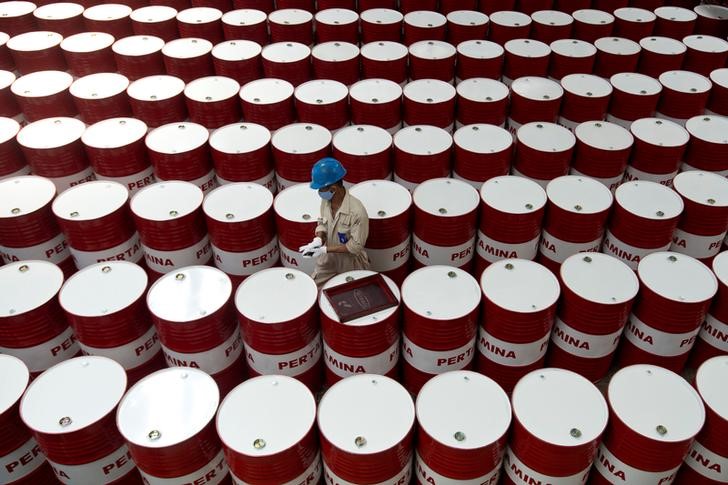Oil prices dip as demand jitters persist; US GDP impresses
Oil prices fell sharply Thursday as concerns about demand growth grew, overshadowing healthy U.S. growth data.
At 08:40 ET (12:40 GMT), Brent oil futures expiring in September fell 1.1% to $80.81 a barrel, while West Texas Intermediate crude futures fell 1.3% to $76.60 a barrel. US GDP, PCE inflation in spotlight
U.S. gross domestic product data showed that the country's economy grew an annualized 2.8% in the second quarter, an improvement from the 1.4% growth seen in the first quarter.
Importantly, the price component showed a fall to 2.3%, from 3.1% the previous quarter, a significant cooling of inflationary pressures.
The PCE price index - which is the Federal Reserve’s preferred inflation gauge- is due this Friday, and is likely to factor into the central bank’s outlook on interest rates.
The readings come just days before a Fed meeting next week, where the central bank is widely expected to keep rates unchanged. But markets will be watching for any cues on when the bank plans to begin cutting rates, with general consensus pointing to a September easing. China demand remains a point of concern
However, concerns over Chinese demand remained in play, after the world’s biggest oil importer reported disappointing growth figures for the second quarter. China’s oil imports also sank in June.
The readings, coupled with scant cues on more stimulus measures from Beijing, kept sentiment over China largely constrained.
An unexpected interest rate cut by the People’s Bank did little to improve sentiment.
Uncertainty over the U.S. presidential race also dented sentiment towards China, amid doubts over just what a change in U.S. administration will entail for Washington’s stance towards Beijing.
Additionally, data out of Europe showed that companies in the eurozone's two largest economies are growing more pessimistic, raising concerns over the bloc's already sluggish recovery.
The business climate in France and Germany unexpectedly worsened in July and entrepreneurs took a dimmer view of the coming months, the national polls showed, a day after a separate survey pointed to stalling growth in the euro area. U.S. inventories provide brief relief
Both benchmarks rose on Wednesday, snapping consecutive sessions of declines after the Energy Information Administration said U.S. crude inventories fell by more than expected to 3.7 million barrels last week. [EIA/S]
U.S. gasoline stocks dropped by 5.6 million barrels, against analyst expectations of a 400,000 draw.
(Ambar Warrick contributed to this article.)
Source: Investing.com
